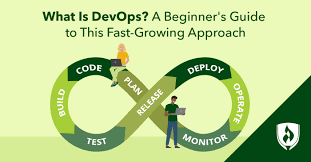Introduction;
DevOps is a fusion of software development and IT operations designed to streamline product lifecycles and enhance operational performance, benefiting both companies and their customers. However, it’s not just a methodology or toolset; it represents a cultural shift that builds upon agile and lean software development principles. This transformation is essential for transitioning from traditional, on-premises, product-focused cultures to the modern, SaaS-driven, service-centric paradigm prevalent in today’s tech industry. Leading companies across various sectors, including retail and technology, leverage DevOps to boost efficiency and expedite product improvements.
DevOps: Beyond Tools and Techniques
Let’s delve into the dimensions of a successful DevOps approach, focusing on the fact that its real strength lies beyond the tools it employs.
Infrastructure as Code (IaC)
IaC involves expressing infrastructure configurations in code, enabling automated provisioning and management of infrastructure resources. Tools like Terraform or Ansible streamline resource allocation and configuration management.
Containerization and Orchestration
Containers, such as those managed by Docker, ensure consistency between development and production environments. Container orchestration platforms like Kubernetes automate the scaling, deployment, and management of containerized applications.
Continuous Integration and Continuous Deployment (CI/CD)
CI/CD pipelines are the lifeblood of DevOps. They integrate automated testing and deployment, ensuring that code changes are swiftly and systematically incorporated into production environments. Tools like Jenkins, Travis CI, and GitLab CI/CD enable this automation.
Configuration Management
Tools like Puppet, Chef, and Ansible automate configuration management, ensuring systems are consistently configured and comply with defined standards. This minimizes configuration drift and enhances system stability.
Monitoring and Observability
Real-time monitoring and observability solutions, such as Prometheus and Grafana, provide actionable insights into application and infrastructure performance, facilitating rapid issue detection and troubleshooting.
Security Automation
DevSecOps integrates security into the DevOps pipeline. Tools like OWASP ZAP and Nessus automate security testing, vulnerability scanning, and compliance checks, ensuring that security is an integral part of the deployment process.
Version Control
Version control systems like Git are fundamental for tracking changes in code and configuration. They enable collaboration among development teams and provide a historical record of modifications.
Infrastructure Orchestration
Infrastructure orchestration tools like AWS CloudFormation or Google Cloud Deployment Manager automate the provisioning and management of cloud resources, enhancing scalability and reproducibility.
Automated Testing
Automated testing frameworks, including JUnit for unit testing and Selenium for end-to-end testing, ensure code quality and reliability throughout the development process.
Log Management and Analysis
Tools like ELK Stack (Elasticsearch, Logstash, Kibana) and Splunk facilitate log management and analysis, allowing for the identification of issues and performance bottlenecks through log data.
Continuous Improvement: The Key to DevOps Success
DevOps isn’t a static state achieved by implementing a set of tools and practices; it’s a continuous journey of improvement. Let’s explore the significance of ongoing refinement:
-
Continuous Monitoring and Feedback Loops Continuous monitoring is crucial for staying ahead of issues. Tools like New Relic or AppDynamics capture real-time data on application performance, enabling proactive issue resolution. Feedback loops ensure that insights from monitoring are integrated into the development process, enhancing software quality and stability.
-
Agile Methodologies and DevOps Integration DevOps aligns seamlessly with agile methodologies like Scrum and Kanban. The iterative nature of agile development complements the rapid delivery cycle promoted by DevOps, fostering collaboration, flexibility, and quick responses to changing business needs.
-
Cloud-Native Architecture Modern DevOps practices often embrace cloud-native architecture. Cloud providers like AWS, Azure, and Google Cloud offer services that enable dynamic scaling, optimized resource utilization, and high availability, making infrastructure more adaptable to the speed of software development.
HazenTech: Your Partner for DevOps Excellence
At HazenTech, we understand that achieving DevOps excellence is a dynamic journey that requires smart efforts, careful planning, and top-notch competencies. We’re here to guide you through these dynamic endeavors, ensuring your organization harnesses the full potential of DevOps for streamlined product delivery and enhanced operational performance.
Ready to embark on your DevOps journey or need further guidance? Contact us today for a free consultation with our experts.
Let’s transform your organization’s software delivery and operational performance together.

